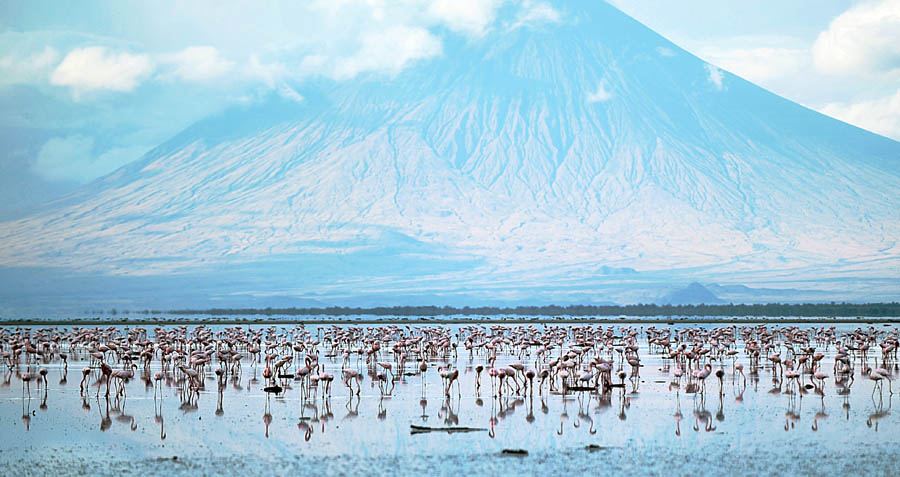

- #Calcifying lake natron tanzania skin#
- #Calcifying lake natron tanzania full#
- #Calcifying lake natron tanzania series#
As shallow lakes in a hot climate, their water temperatures can reach as high as 106 degrees Fahrenheit (41 degrees Celsius). Both are terminal lakes that do not drain out to any river or sea they are fed by hot springs and small rivers. Lake Natron is one of two alkaline lakes in that area of East Africa the other is Lake Bahi. The flamingos' nests are built on small islands that form in the lake during the dry season. The truth about Lake Natron is far more interesting than myths.During breeding season, more than 2 million lesser flamingos ( Phoenicopterus minor) use the shallow lake as their primary breeding ground in Africa. Its unique ecosystem underscores the balance between life and death, showcasing how even in the harshest conditions, life finds a way to not just survive, but thrive.
#Calcifying lake natron tanzania full#
Lake Natron is an excellent reminder of how nature is full of surprises and adaptations. But there’s more to this lake than meets the eye. Its eeriness, the ghostly images of life arrested in time, is a fascinating aspect of its lure. For this reason, it it’s a magnet for both tourists and scientists alike. The juxtaposition between Lake Natron’s beauty and harshness is stark. The lake’s extreme conditions keep the flamingos safe from predators, while the algae thriving in the salty water serve as a rich food source. Yet, despite its harshness, Lake Natron is the chosen breeding ground for more than 2.5 million Lesser Flamingos. So while it’s not turning beings to stone, it’s not exactly a friendly dip.
#Calcifying lake natron tanzania skin#
Touching the water could cause burns, especially to the eyes and skin of unadapted animals and humans. With temperatures that can reach up to 60 degrees Celsius (140 degrees Fahrenheit), it’s inhospitable for many species.

However, that doesn’t mean Lake Natron is all welcoming. But instant petrification? That’s a myth.

Similar to how ancient Egyptians used natron to mummify bodies, the lake’s water can preserve and give a stony appearance to those unfortunate creatures that end up in its depths. The animals, likely dead before they touched Natron’s waters, were preserved by its alkalinity. But the reality is less fantastical and more scientific.
#Calcifying lake natron tanzania series#
Photographer Nick Brandt published a series of hauntingly beautiful images of calcified animals along Lake Natron’s shores, triggering rumors that its water could turn creatures to stone. But before you jump to a petrifying conclusion, let’s debunk that myth. In stark contrast to its resident fishes, the lake has been accused of turning birds and other animals into statues. These hardy creatures adapted to Lake Natron’s harsh conditions and live quite happily in its waters. Three species of fish, Alcolapia alcalica, Alcolapia latilabris, and Alcolapia ndalalani, call this caustic lake home. With these numbers, you might think nothing could survive here. Add in some salt and mineral impurities, and you have a lake with a pH as high as 10.5. It gets its name from natron, a naturally occurring mixture of sodium carbonate decahydrate and around 17% sodium bicarbonate. Lake Natron, nestled in the Great Rift Valley, is a salt lake. It’s rumored to turn animals into stone (though that’s not quite true). Imagine a vast shimmering pink and red body of water so caustic that it burns your skin and eyes. Tanzania’s Lake Natron is not your average lake.


 0 kommentar(er)
0 kommentar(er)
